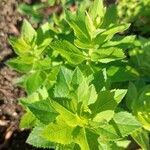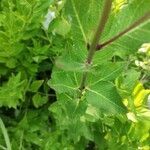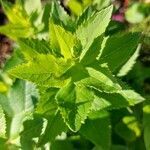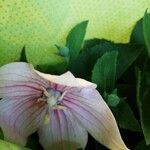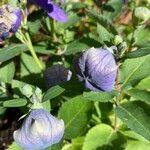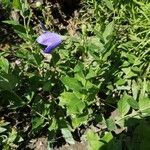Stems 20-120 cm tall, usually glabrous, rarely densely puberulent, simple, rarely branched above. Leaf blade adaxially green, ovate, elliptic, or lanceolate, 2-7 × 0.5-3.5 cm, abaxially glabrous (rarely puberulent along veins) and glaucous, adaxially glabrous, base broadly cuneate or rounded, margin serrate, apex acute or acuminate. Hypanthium hemispherical, obovoid, or obconic, rarely campanulate, glaucous. Calyx lobes triangular or narrowly triangular, sometimes toothlike. Corolla blue or purple (rarely pink or white), 1.5-4.5 cm. Capsule globose, obconic, or obovoid, 0.7-2.5 × 0.7-1.5 cm. Fl. Jul-Sep, fr. Aug-Oct. 2n = 18, 36.
More
A perennial plant. It grows 45-60 cm high and 30-45 cm wide. It has fleshy roots. The leaves are blue-green. They are sword shaped and have teeth along the edge. The buds are balloon shaped. The flowers are spreading and bell-shaped. They can be 5 cm across. They are blue or violet.
Only the leaves from the top are eaten. The young shoots in spring are used as a potherb. CAUTION: The root leaves are considered slightly toxic. The root is cut into strips, seasoned with chilis, vinegar, sesame oil, and soy sauce and eaten with salads. It is also used in soups. The flowers are eaten in salads.
